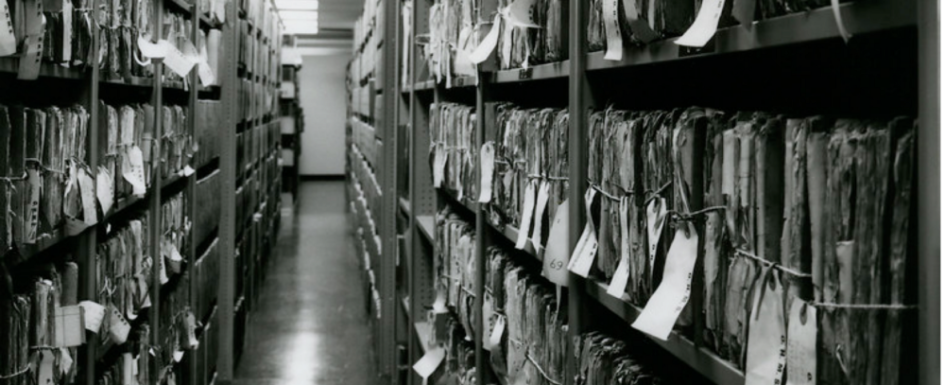

In the midst of COVID-19 induced social isolation, with many institutions like museums closing their doors, digital surrogates are forced to temporarily take the place of embodied experience. While most of our distancing is temporary — for some objects, their surrogates are all we have.
The weight that replicas have to bear is dependent on their function. If the original object is destroyed, through intentional or accidental means, the record of that original no longer serves as a finding aid — something that points the way to an attainable original. If our reproductions will serve in place of original objects, predicting what will be meaningful about the original is necessary, demanding, and maybe impossible. Such mindful practices are also undeniably worth it.
Dr. Lyneise Williams has articulated the stakes of this issue well in, “What Computational Archival Science Can Learn from Art History and Material Culture Studies.”

Why not just keep the original? Why put so much pressure on replicas? There are cases that require replicas to rise up to the task of “replacement.” Space is often an issue. Thousands of newspapers have been microfilmed, which is a much smaller and more stable form. The stability is also a key reason why originals are often not saved. Newspaper is produced cheaply, and the paper itself degrades over time. These concerns are not trivial, particularly since the housing of archival documents requires a stable environment (reminder: you shouldn’t store things you want to save in non-climate-controlled areas like basements or sheds). Sometimes it is impractical or even impossible to keep all of the originals.
There are material limits to saving “everything”. However, if the goal is to preserve an object (which newspapers are), then there is ultimately and inherently a value judgement placed on what is being saved. The wood-pulp that constructs the paper sheet is arguably not the thing of value. For archivists, particularly when microfilming a collection, the thing of value was often the text. This assumes a user that does not pay attention to images, perhaps ignoring the persistent spaces that pictures occupy. However, this sublimation of the image makes assumptions about how people navigate the world and what is worth saving of that world.
Transforming the original to a stable and condensed form requires transformation that erases the object’s original presence, sometimes irrevocably. If we want to keep the “full” record of the original object, then perhaps the only way to draw near to this goal is through creating a sort of facsimile.
One particularly difficult part of preservation practices is identifying the specific aspects of value embedded in an object. Such valuation has to be assessed for the future at the moment of intake. If an archive is retaining an object, this aspect is at least considered in so far as it marks the object as worthy of preservation. Not everything can be saved, and not everything should be. Time and resources must be spent to ensure that what is saved can also be found. There are limits, and so priorities have to be made in order to adequately tend to the objects that have “value”. However, the transformations performed on paper materials that are not “unique” (like newspapers) are significant.

It is difficult to imagine that there would be an acceptably low space requirement for producing object records that are small enough to compete with the current forms of digitized or microfilmed records. However, perhaps the large space requirement would be permissible if it were only applied to a subset of records that were of particular value. No matter what technology is engaged to address these concerns — such decisions have always been, and likely will always be, reflections of human judgements.
The separation of records, however, is risky in its own sense. If we isolate certain items of value, then more weight is placed on the searching mechanism, in order to link otherwise divided objects. Both record types need to be equally accessible, or at least the threshold for engagement needs to be thoughtfully decided in conjunction with community stakeholders. This is easier said than done, particularly in regards to historical communities, or whose record makers are unnamed.
The stakes are not evenly distributed across object types. For records from marginalized communities, there should be a process of engagement and listening in order to ensure that objects that have come into the collection are treated in a way that helps (or at the very least does not harm) those communities. While the impulse may be to make as many objects public and visible as possible, there are certainly cases where this is not the ethical thing to do. Such examples include but are not limited to: Native American cultural objects (which were taken from their communities and were meant to be accessible only by family members) to people’s photos published in a small-circulation journals only to be digitized later and placed online (changing platforms can change everything).
There is no “one-size-fits-all” solution, but perhaps through current initiatives (like Dr. Williams’s project, Vera Collaborative) there will be a clearer way to navigate these important decisions in the future.
To learn more about the work of archivists, see:
Wood, Stacy, Kathy Carbone, Marika Cifor, Anne Gilliland, and Ricardo Punzalan. “Mobilizing Records: Re-Framing Archival Description to Support Human Rights.” Archival Science 14, no. 3–4 (2014): 397–419. doi:10.1007/s10502–014–9233–1. https://rdcu.be/b2P1E.
Bailey, Catherine. “Past Imperfect? Reflections on the Evolution of Canadian Federal Government Records Appraisal” Archivaria [Online], Volume 75(29 April 2013), https://archivaria.ca/index.php/archivaria/article/view/13432.
If you happen to have access, you should also check out:
Wood, Stacy L. “Remote Purchase Environments: The Influence of Return Policy Leniency on Two-Stage Decision Processes.” JMR, Journal of Marketing Research 38, no. 2 (05, 2001): 157–169. http://pitt.idm.oclc.org/login?url=https://search-proquest-com.pitt.idm.oclc.org/docview/235214703?accountid=14709.
